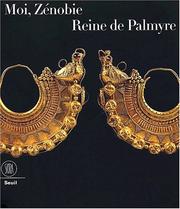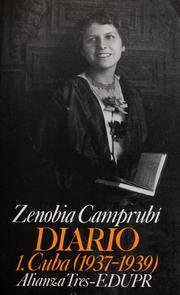| Listing 1 - 10 of 21 | << page >> |
Sort by
|
Book
Abstract | Keywords | Export | Availability | Bookmark
 Loading...
Loading...Choose an application
- Reference Manager
- EndNote
- RefWorks (Direct export to RefWorks)
Au même titre que Cléopâtre, Zénobie est l'une de ces femmes de l'Antiquité dont le mythe a assuré la célébrité. Qu'importe que le « royaume » de Palmyre, cité romaine, n'ait jamais existé, et que l'on sache peu de choses de la vie de la « reine » Zénobie. Pourtant, pendant les quelques années du iiie siècle où elle domina une partie de l'Orient, jusqu'à s'attribuer le titre d'impératrice de Rome, cette femme politique dans un monde dominé par les hommes joua un rôle considérable au moment où la Syrie était prise entre l'ébranlement du pouvoir à Rome et la pression militaire des Perses Sassanides. Entourée d'une cour brillante où s'exerçaient des influences multiples, elle fit de Palmyre l'un des centres du pouvoir et de l'intelligence. Enfin, après sa capture par l'empereur Aurélien en 273, elle fut aussitôt emportée par la légende, à la fois dans la tradition littéraire et artistique occidentale et dans l'historiographie arabe. Tous ces aspects de la figure de Zénobie, l'environnement politique et culturel dans lequel elle évolua et qu'elle contribua à façonner, et l'exploitation millénaire de sa légende sous des formes multiples, autant de sujets qu'explorent les auteurs, dans une démarche originale conduite au plus près de la documentation qu'ils ont eux-mêmes contribué à produire.
Zenobia, --- Tadmur (Syria) --- History.
Book
ISBN: 9788491818984 Year: 2020 Publisher: Madrid : Alianza Editorial,
Abstract | Keywords | Export | Availability | Bookmark
 Loading...
Loading...Choose an application
- Reference Manager
- EndNote
- RefWorks (Direct export to RefWorks)
Digital
Year: 1758 Publisher: La Haye Van Daalen
Abstract | Keywords | Export | Availability | Bookmark
 Loading...
Loading...Choose an application
- Reference Manager
- EndNote
- RefWorks (Direct export to RefWorks)
Book
Year: 2005 Publisher: Project Gutenberg
Abstract | Keywords | Export | Availability | Bookmark
 Loading...
Loading...Choose an application
- Reference Manager
- EndNote
- RefWorks (Direct export to RefWorks)
Zenobia --- Queen of Palmyra --- Fiction
Book
Year: 2005 Publisher: Project Gutenberg
Abstract | Keywords | Export | Availability | Bookmark
 Loading...
Loading...Choose an application
- Reference Manager
- EndNote
- RefWorks (Direct export to RefWorks)
Zenobia --- Queen of Palmyra --- Fiction
Book
Abstract | Keywords | Export | Availability | Bookmark
 Loading...
Loading...Choose an application
- Reference Manager
- EndNote
- RefWorks (Direct export to RefWorks)
Book
ISBN: 0815652313 9780815652311 9780815610236 0815610238 Year: 2013 Publisher: Syracuse, New York : Syracuse University Press,
Abstract | Keywords | Export | Availability | Bookmark
 Loading...
Loading...Choose an application
- Reference Manager
- EndNote
- RefWorks (Direct export to RefWorks)
Zenobia was the third-century Syrian queen who rebelled against Roman rule. Before Emperor Aurelian prevailed against her forces, she had seized almost one-third of the Roman Empire. Today, her legend attracts thousands of visitors to her capital, Palmyra, one of the great ruined cities of the ancient world.In the nineteenth and early twentieth centuries, during the time of Ottoman rule, travel to the Middle East was almost impossible for Westerners. That did not stop five daring women from abandoning their conventional lives and venturing into the heart of this inhospitable region. Improbable Women explores the lives of Hester Stanhope, Jane Digby, Isabel Burton, Gertrude Bell, and Freya Stark, narrating the story of each woman's pilgrimage to Palmyra to pay homage to the warrior queen. Although the women lived in different time periods, ranging from the eighteenth century to the mid-twentieth century, they all had middle- to upper-class British backgrounds and overcame great societal pressures to pursue their independence.Cotterman situates their lives against a backdrop of the Middle Eastern history that was the setting for their adventures. Divided into six sections, one devoted to Zenobia and one on each of the five women, Improbable Women is a fascinating glimpse into the experiences and characters of these intelligent, open-minded, and free-spirited explorers.
Women travelers --- Zenobia, --- Middle East --- History

ISBN: 8884911168 Year: 2001 Publisher: Milano Skira
Abstract | Keywords | Export | Availability | Bookmark
 Loading...
Loading...Choose an application
- Reference Manager
- EndNote
- RefWorks (Direct export to RefWorks)
Art, Ancient --- Art --- Zenobia, --- Tadmur (Syria) --- Antiquities

ISBN: 8420638838 8420632570 8420632805 8420698784 0847736687 0847736520 0847736660 0847707318 Year: 1991 Publisher: Madrid : [Río Piedras, P.R.] : Alianza Editorial ; Editorial de la Universidad de Puerto Rico,
Abstract | Keywords | Export | Availability | Bookmark
 Loading...
Loading...Choose an application
- Reference Manager
- EndNote
- RefWorks (Direct export to RefWorks)
Poets, Spanish --- Biography. --- Jiménez, Juan Ramón, --- Camprubí, Zenobia, --- Marriage. --- Diaries.

ISBN: 2226006176 9782226006172 Year: 1978 Publisher: Paris: Albin Michel,
Abstract | Keywords | Export | Availability | Bookmark
 Loading...
Loading...Choose an application
- Reference Manager
- EndNote
- RefWorks (Direct export to RefWorks)
Zenobia --- Fiction --- Tadmur (Syria) --- Désherbage --- 840-3 SIMIOT, BERNARD --- Deselectie --- Zenobia, --- Septimia Bathzabbai, --- Zinūbyā, --- Zanūbyā, --- Zaynab al-Zabbāʼ, --- Septimia Zenobia, --- Bat Zabbai, --- Bath Zabbāy, --- Zabbāʼ, --- Settinia Zenobia, --- Sebaste, Septimia Zenobia, --- Zénobie, --- زنوبيا، --- زينب، --- Fiction. --- Tudmur (Syria) --- Tadmor (Syria) --- Tedmor (Syria) --- Palmyra (Syria) --- Palmyre (Syria) --- Palmyra --- Zenobia - Fiction --- Tadmur (Syria) - Fiction
| Listing 1 - 10 of 21 | << page >> |
Sort by
|

 Search
Search Feedback
Feedback About UniCat
About UniCat  Help
Help News
News